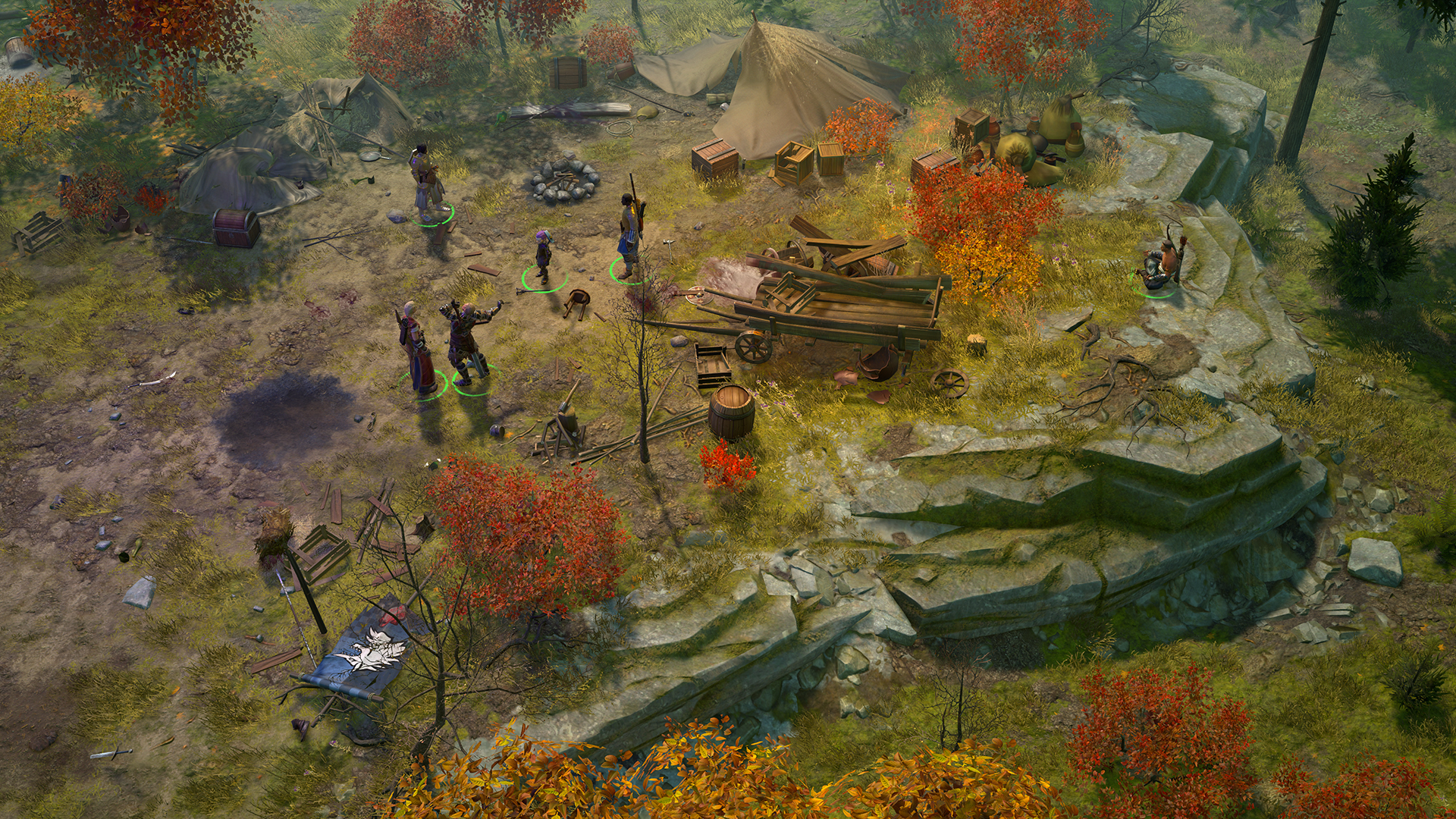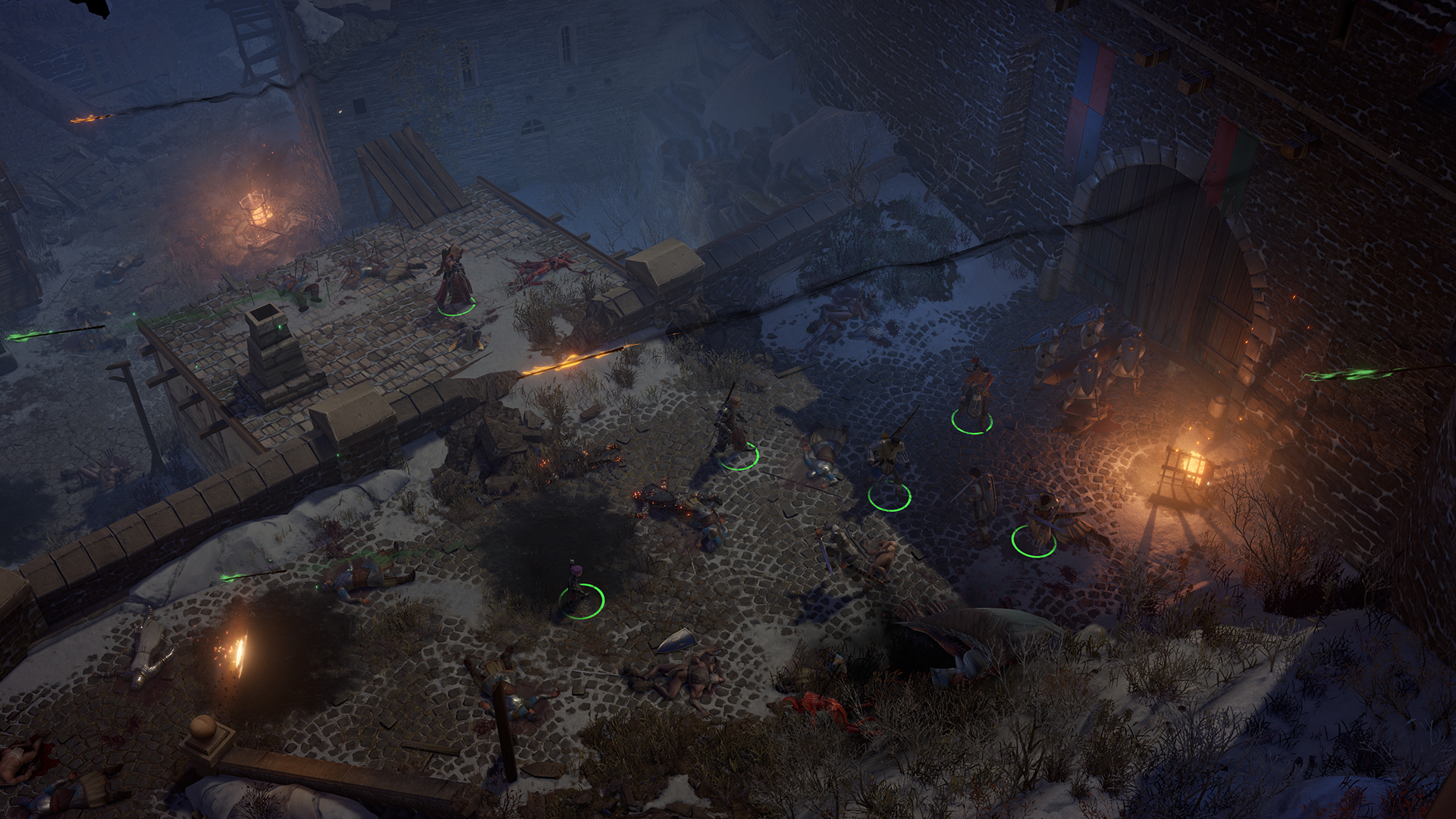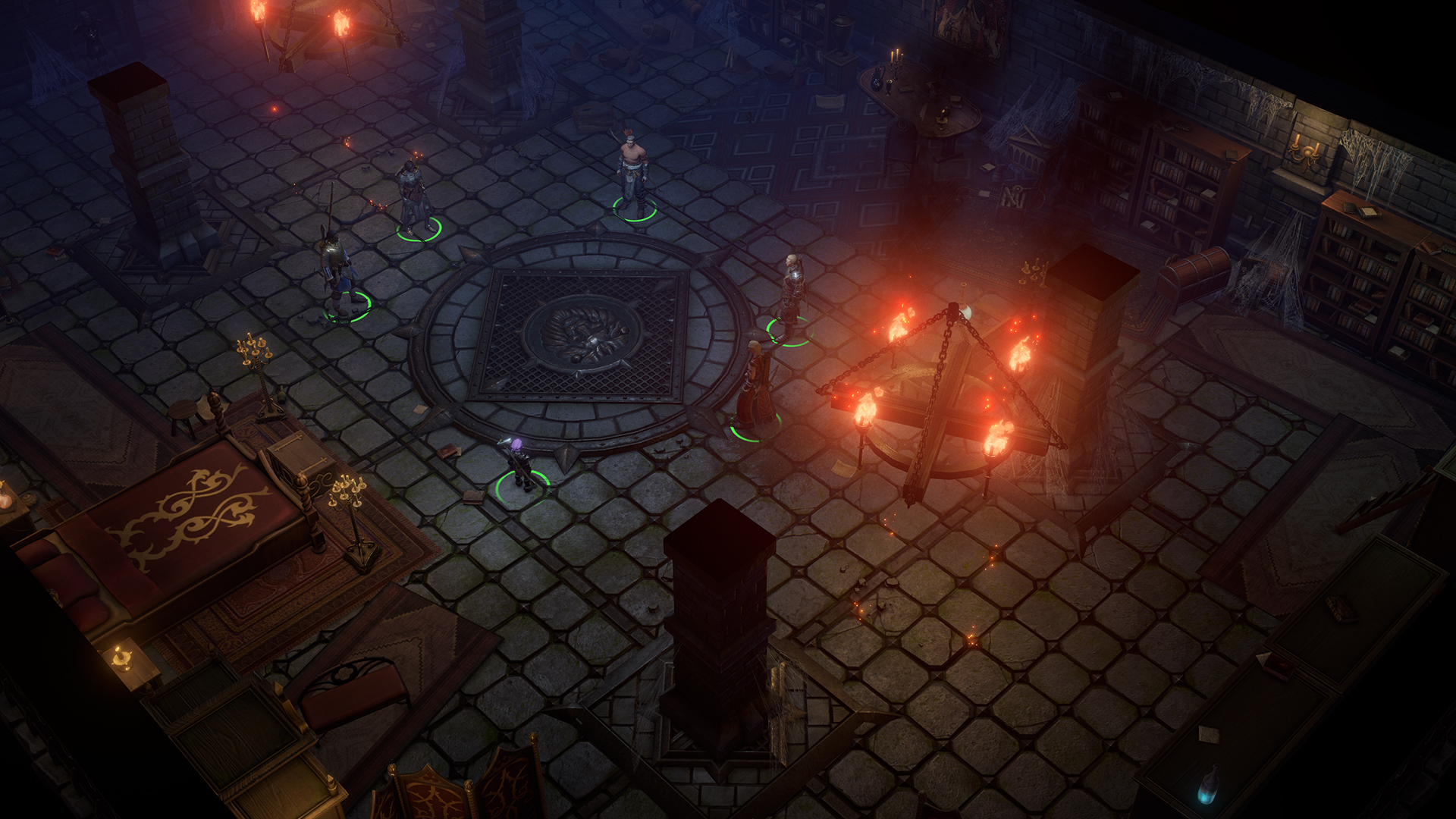Pathfinder: Wrath of the Righteous brings another tabletop favorite to PC
Pathfinder: Wrath of the Righteous delivers a faithful tabletop experience

BOSTON – Pathfinder: Wrath of the Righteous will soon make the jump from pencils and dice to circuit boards and GPUs. Like 2018’s Pathfinder: Kingmaker, Wrath of the Righteous will adapt a fan-favorite adventure from the Pathfinder tabletop game into an epic PC RPG. And while the overall gameplay hasn’t changed much since Kingmaker, there’s a new twist. Instead of managing a kingdom, this time, you’ll get to control an army.
I went hands-on with Pathfinder: Wrath of the Righteous at PAX East 2020, and I admired a lot of what I saw. The game is complex, demanding and doesn’t make many concessions for those not familiar with the Pathfinder universe. But, on the other hand, it’s also packed to the gills with playable races and classes, spells, abilities, battle strategies and important choices that can change the course of the story. If Pathfinder: Wrath of the Righteous asks a lot from its players, it’s because it offers a lot back in return.
- PS5 and Xbox Series X lifecycles: How long will these new consoles last?
- The best PC games to play now
- GDC postponed due to coronavirus: What’s next?

Pathfinder: Wrath of the Righteous gameplay
For my demo, the devs cut out a climactic scene from the game’s second chapter. (There will be at least five chapters for approximately 80 hours of gameplay, so don’t expect to play this one in a weekend.) The protagonist, a knight-commander in a ragtag army, had gathered his party for an assault on an enemy stronghold. His companions offered him three possible options to achieve his goal: sneaking in through the dungeons, assaulting a group of giants holding down the fort or simply plowing in through the main gate.
The third option seemed like suicide (although, like most things in the game, it’s probably possible with enough preparation and the right strategy), so I opted for the first. This meant that I had a relatively simple route into the stronghold, and had to fight only a few stray enemies along the way.
Many of the foes you encounter in Wrath of the Righteous are demons. That’s because the adventure focuses on a huge, ongoing war against the forces of darkness. While the original tabletop module was optimized for clerics, paladins and other holy characters, Owlcat Games has taken a slightly different approach for the video game adaptation. In this version of Wrath of the Righteous, any character, of any moral alignment, can take center stage.
As such, making moral choices is a big component of gameplay. As I made my way through the dungeon, I found a succubus imprisoned in one of the cells. In Pathfinder, succubi are alluring female demons who often seduce hapless men and take their souls. This succubus insisted that she wanted nothing more to do with her demonic brethren, and if I let her go, she wouldn’t bother anyone again.
Before I made my decision, the rest of my party weighed in, and there was simply no way to make everyone happy. My rogue bristled at the idea of taking a demon at her word, while my wizard thought that being merciful was worth the risks. My paladin, surprisingly, was unsure how to proceed. She believed that even demons have free will, but found it unlikely that one would willingly forego causing mischief.
In the end, I decided to free the succubus. One of the devs informed me that because of my decision, she would return as a potential party member later on. The game will be full of choices like that, and it won’t always be easy to see the repercussions of your decision until many chapters later.
Once I arrived in the city, I got to put the combat system through its paces. The game is an isometric RPG that employs real-time-with-pause combat. If you’ve played Baldur’s Gate, Pillars of Eternity or anything similar, you know how this works. Left to their own devices, characters will simply target the closest enemy and attack in real time. But you can also pause the game and issue commands to characters. This is how you’ll get them to reposition themselves, cast spells and use special abilities that can turn the tide of combat.
As with Pathfinder: Kingmaker, the combat in Pathfinder: Wrath of the Righteous demonstrates just how deep of a rabbit hole the game can be. My characters in the demo were Level 8, which meant they all had access to a tremendous amount of spells and abilities. I had to stop the demo a few times and read through my characters’ abilities, and even then, I was never quite sure what the right spell for any given situation would be.
(It didn’t help that I wasn’t quite sure how difficult the opponents would be, either. I once buffed my party up with all of my most powerful spells to fight an ogre, which then proceeded to go down without a fight.)
Of course, this won’t be much of a problem for fans who are familiar with the Pathfinder tabletop RPG. Even newcomers will be able to ease themselves in, as characters’ spell rosters grow over time, and each character will start at Level 1. Still, it reminded me that Pathfinder is a big, deep system, and like Kingmaker, Wrath of the Righteous pretty much expects you to know all the basics going in.

Pathfinder: Wrath of the Righteous special features
As in Kingmaker, most of Pathfinder: Wrath of the Righteous is about going on quests, making dialogue choices and fighting it out with diverse groups of enemies. But Kingmaker had a special feature: the ability to command your own kingdom. Land management isn’t a big focus in the Wrath of the Righteous tabletop module, so the developers added two other features instead: Mythic classes and army management.
Mythic classes seem to be the game’s unique selling point. While Pathfinder characters can become powerful, they’re still not generally strong enough to go toe-to-toe with demon lords. That’s why they’ll be able to earn divine – or infernal – power. Players can ally themselves with heavenly or hellish forces to become an Angel, a Demon, a Lich, a Trickster, an Aeon or an Azata. The devs also hinted that players who insisted on maintaining their humanity could go for a Legend class instead, but this path would require a lot of different choices throughout the story.
Between the 20 levels of basic character classes and 10 levels of Mythic classes, characters could become extremely powerful by the end of Wrath of the Righteous. Mythic class abilities should also add another dimension of combat strategy, since each one plays very differently.
I didn’t learn quite as much about the army management, but it sounds similar to the kingdom management from the first game, if not quite as deep. After you acquire a stronghold of your own, you’ll be able to recruit groups of warriors, then send them into battle against demonic hordes in distant parts of the world. It’s not clear whether you’ll need to do this for additional rewards or to move the story forward – or both – but which battalions you control will affect the story.
For example: the merciless Hell Knights would rather kill their own troops than let demons capture them. Allying yourselves with them will almost certainly please some of your allies, and rub others the wrong way.

Pathfinder: Wrath of the Righteous stability
While Pathfinder: Kingmaker had its ups and downs, I can’t help but find myself looking forward to Wrath of the Righteous. The gameplay is rock solid, and this time around, the devs think that the game will be much less buggy from the start. (One of the reasons why I put Kingmaker down is because it had massive patches just about every other day near launch, making it hard to keep track of the game’s features.)
In addition to channeling more resources toward QA, the devs have two new tricks in their arsenal: a decision tree tool that charts every decision’s outcome in future chapters, and a bot that plays through the game over and over, making completely random choices. The former should ensure that every action has a proper consequence; the latter should help reduce bugs that crop up from unlikely story choices.
Pathfinder: Wrath of the Righteous should be out sometime in 2021 for PC, although there’s no price announced yet. Kingmaker launched at $40, so expect something in that range.
Sign up to get the BEST of Tom's Guide direct to your inbox.
Get instant access to breaking news, the hottest reviews, great deals and helpful tips.
Marshall Honorof is a senior editor for Tom's Guide, overseeing the site's coverage of gaming hardware and software. He comes from a science writing background, having studied paleomammalogy, biological anthropology, and the history of science and technology. After hours, you can find him practicing taekwondo or doing deep dives on classic sci-fi.

